The world’s second biggest retailer, Carrefour, is trying to reinvent the hypermarket. John Ryan visits Lyon in France to find out how
How do you make a supermarket interesting? Come to that, why bother doing so - shoppers will come anyway because we all need to eat. That, or a version of it, is the view taken of food distributors in France, according to Hubert de Malherbe, president of the eponymous Paris-based Malherbe Design.
In truth, there is much to be said for this view, as anyone who has been to a French hypermarket will probably attest.
Mindful of this low opinion, Carrefour, the world’s second largest retailer, commissioned Malherbe Design to “do something really outstanding, no matter what the cost”. This is the kind of brief that most retail designers dream of, but de Malherbe is quick to point out that things “changed and they came back to something much more realistic”.
The outcome is to be found in France’s second city, Lyon, where Carrefour refurbished a pair of stores with work completed in August. One store is in the affluent western suburb of Écully and the other in distinctly working class Vénissieux, in the south of the city. Although the word Carrefour is over the door of both, these are stores unlike any other in the retailer’s portfolio and different from other operators in the sector too.
Money talks
De Malherbe says from the outset the challenge turned out to be one of cost. The consultancy also works with E.Leclerc, another French hypermarket retailer, but one that tends to operate stores with a footprint of between 43,000 sq ft and 54,000 sq ft, rather than the average 110,000 sq ft stores that characterise a Carrefour hypermarket’s size. “E.Leclerc has much more money to spend per square foot because their stores are smaller. So what we tried to do was create something that would be possible to roll out across Europe,” says de Malherbe.
He also points out that Carrefour and others like it operate in a pretty hostile trading environment: “Carrefour is moving in a world where everybody wants everything. They want low prices, they want convenience and they want well-designed stores that will give them a good experience.”
Given the sprawling acres that characterise the average hypermarket, you might be forgiven for thinking at this point that whatever was done in Écully or Vénissieux, the cards were stacked against the creation of a design that would fulfil this particular dream. Yet stand outside the Écully store and it’s hard not to feel just a little curious about this particular big box. It has two obviously designed entrances featuring large glazed areas with wooden slats and bold red font against black or green against black, depending on which portal you choose to use to gain access.
Once inside this 155,000 sq ft store, the lion’s share of the Centre Commercial Écully Grand Ouest, it should, by all rights feel like an enormous space and to an extent this prejudice is confirmed. It has a very, very long open frontage within the centre.
In the good old days, pre-banking crisis and the seeming collapse of sterling against the euro, those who might have been on a booze cruise will be pretty familiar with this form of French retailing. Bland and enormous might best summarise the experience. Carrefour Planet in Écully is definitely enormous, it’s the eighth largest hypermarket the retailer operates, but it is not bland.
Walk to the right-hand end of the shop, the principle means of ingress, and you are immediately in the thick of things. And what is apparent is that this is a store that has been divided into shop-in-shops, bite-sized merchandise and category areas that makes the interior manageable for the shopper.
De Malherbe says the problem that confronts Carrefour, along with every other French hypermarket retailer, is that the food offer tends to be very good, but the general merchandise area is at best weak. This probably has less to do with the stock on offer and everything to do with how it is displayed.
New territory
The blurb put out by Carrefour is that its Planet format is “a new hypermarket concept for a completely new shopping experience”. From a practical perspective this means that product has almost been lifestyled in terms of category organisation. Nothing terribly remarkable in this, except that given the normal state of affairs in a food-cum-general merchandise store, you would not expect zones called Maison, Surgelés (frozen food), or even Le Bio (organic foods).
Each of the areas, and there are eight of them, has a translucent colour-coded beacon overhead - a simple but effective device, owing to their large size. In the Multimédia area (printers, laptops, digital cameras etc), it is apparent Carrefour has done a deal with Microsoft and HP, as the pale grey beacon features brand signals from both.
Each zone has its own distinct character. Taking two of these at random, Le Marché (a fresh food area at the back of the store) and Beauté, it’s easy to see how this is a store that has been thought through in terms of experience.
Store director Jean-Luc Arnaud is clearly proud of Le Marché. He points to the “total visibility” across the space, which occupies more than a quarter of the store, and that all of the display equipment is low rise (nothing is more than 1.5 metres high), helping to make this a reality. His arm sweeps widely as he highlights the LED low voltage lighting system used to illuminate the area - which comes with a blacked out, rather than white, ceiling. Lighting stock rather than shop is a familiar design trope for those in the fashion business, but you won’t often see this in a food store.
Food theatre
Arnaud also makes great play of the fact that there are “more than 40 local and regional suppliers” to this part of the shop. Shoppers can find anything from a type of sausage produced in the area to cheeses from a two-women outfit who also send their products to Paul Bocuse - a grand fromage in French cuisine apparently.
It is the add-ons in this area that really impress, however. Stand in front of the fish counter and there are two large upright shiny, chromed boxes with glass fronts to them. One is used to salt Norwegian salmon (using large organic sea salt crystals, naturally) and the other is for use when this process is complete - at which point the salmon is smoked. It’s the kind of thing that is usually done off site, but this is about food theatre.
Listen carefully at this point and the piped sound of seagulls is all around in this part of the store - meant, presumably to remind the shopper of the provenance of what they are about to buy. Pride of place, however, probably goes to the cheese and cured meats counters, each of which has a glass-sided cave that objectifies the product in a way that wouldn’t be possible if it was laid out on a normal counter.
Wander to the beauty area and there is a high-tech mirror for those interested in make-up. Stand in front of this, press a button and an image of yourself will appear. Now wave a lipstick’s barcode in front of the reader at the bottom of the mirror and voilà, your lips are the colour of the lipstick in your hand. It’s a relatively simple but appealing piece of trickery and helps the shopper to engage with the make-up department in an environment in which cosmetics would more normally be piled high or stowed behind a glass counter.
In-store engagement is what Carrefour Planet is about and for shoppers entering these stores it will be a case of lingering rather than rushing for the exit. Arnaud says plans are in place to take this trial across the chain and there is every reason to suppose that it will put the retailer back on the map as far as the French consumer is concerned. More generally, it might also rekindle a love affair that had gone sour with the hypermarket format.
Carrefour
Écully, Lyons
Size 155,000 sq ft
Location The west of the city
Format design Malherbe Design, Paris
Point of difference A series of interactive ‘universes’ that act as shop-in-shops
Prospects A new format that is likely to be rolled-out internationally by Carrefour




















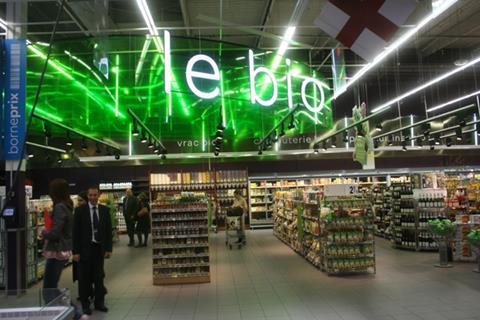
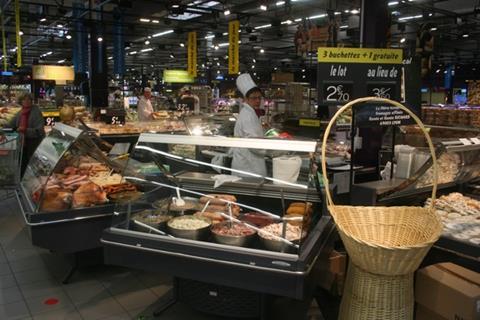
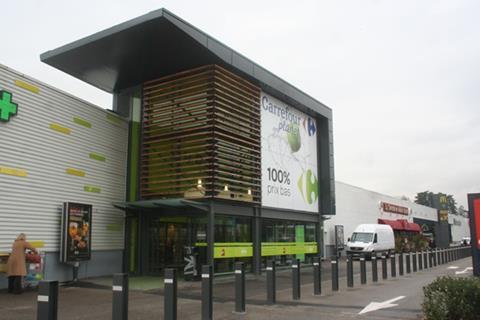
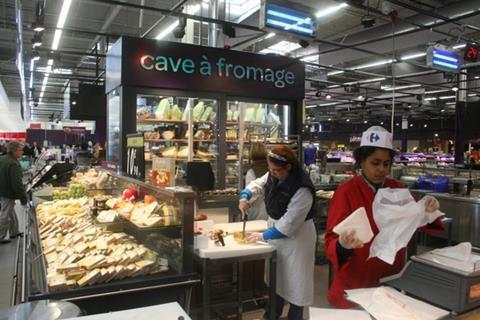

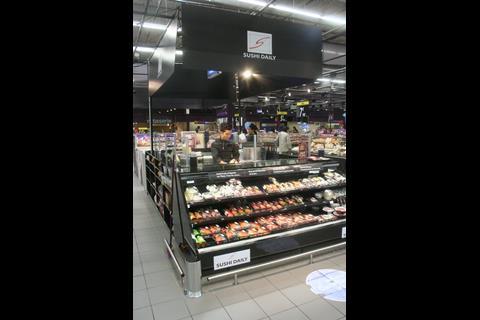
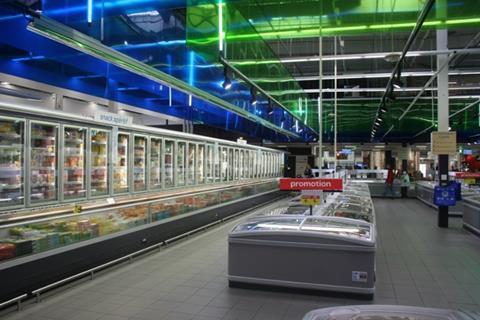
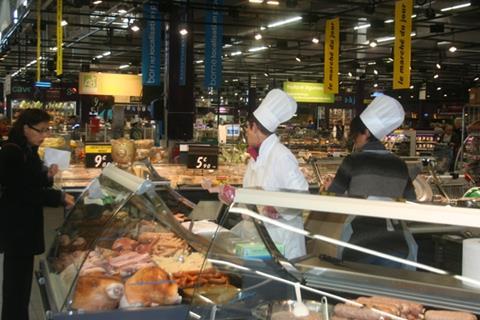
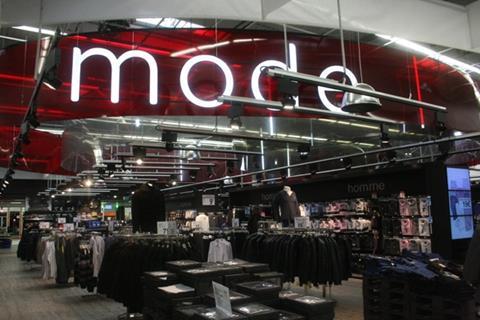
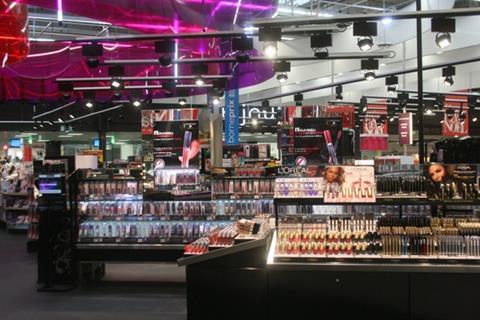
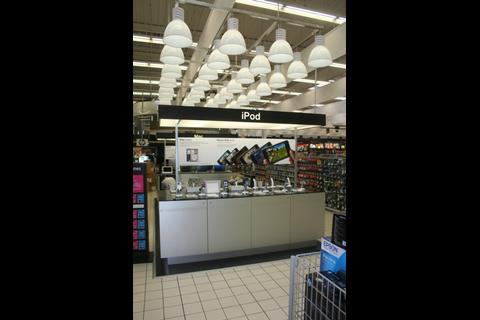




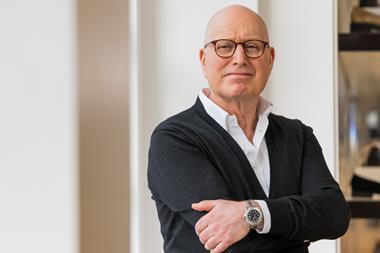
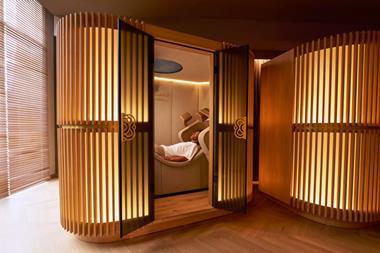
No comments yet